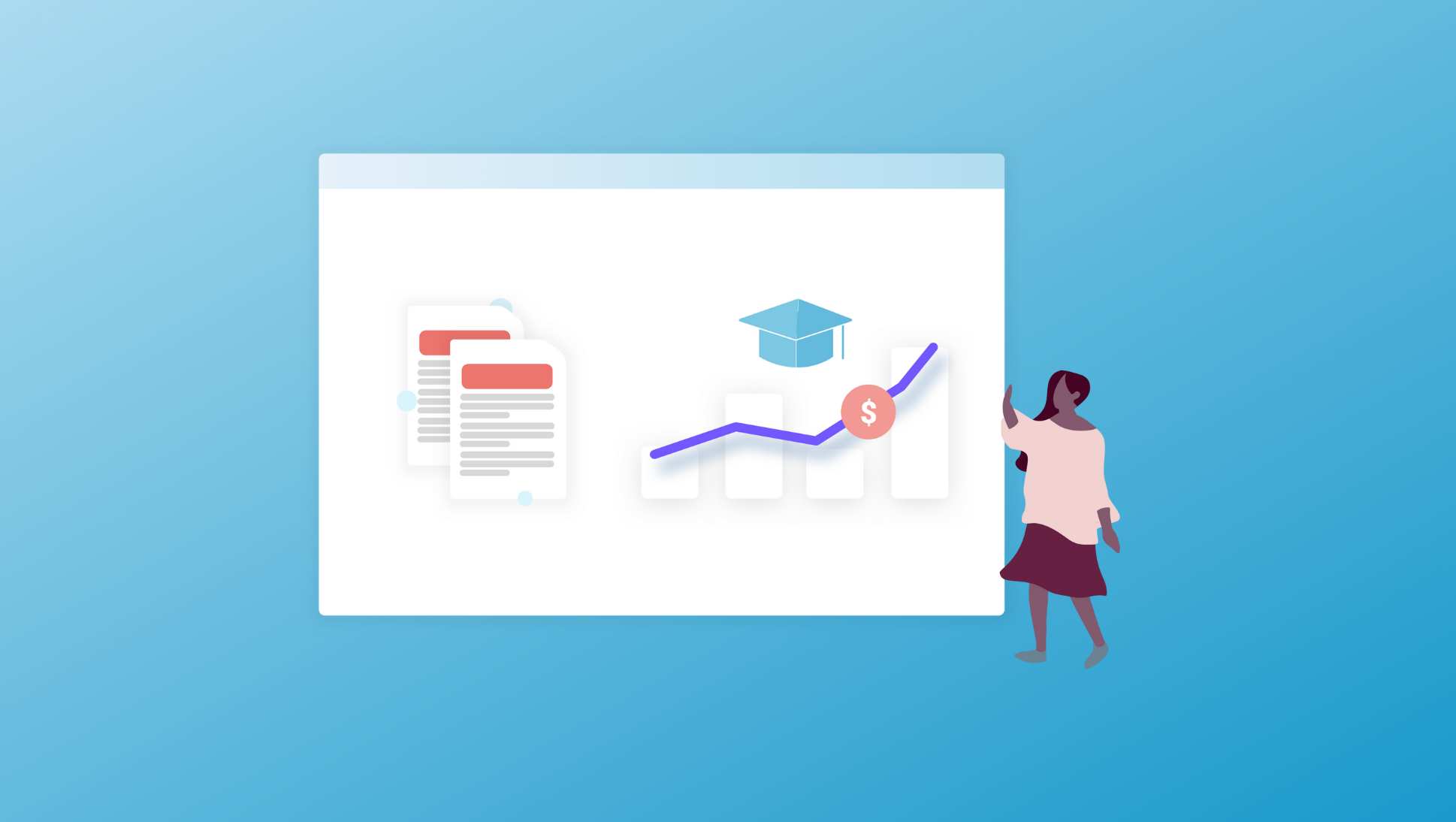4 min read
ACT and SAT Must-Knows for High Schoolers
We recently published a podcast episode on this topic. This blog post provides a recap of what we covered during the episode. Hi! It’s Abby from...
Free for students & their families
Seamlessly integrated, affordable systems for use across your district.
Career Readiness for 6-8 grade, built to guide and track progress in the early years of career exploration.
Scoir + Common App are integrated for the 2025-26 academic year!
Check out content and practical guides to help inform your enrollment strategies and programs.
4 min read
 Julie Kampschroeder
:
May 18, 2020
Julie Kampschroeder
:
May 18, 2020

If you’re planning to attend college, it’s likely that you’ll need to consider borrowing money to do so. The idea of borrowing money can be intimidating and overwhelming, but it shouldn’t scare you away from college entirely. Roughly half of students take out loans in order to attend college. When you understand the types of loans that are available to you versus those that are available to your parents, you can be sure that you are setting yourself up to graduate with an education you are proud of and a manageable amount of debt.
Whether you need help paying for college or not, everyone should fill out the FAFSA form. Filling out the FAFSA qualifies you for federal grants, state grants, low-interest federal loans, work-study, state loans, college or institutional loans, and college or institutional grants and scholarships (you can read about those types of aid here, as we’ll just be discussing loans in this article).
You must complete the online FAFSA form using tax information from the prior-prior tax year to find out if you are eligible for a federal subsidized student loan. If you qualify, you’ll find this loan type listed on the individual financial aid packages you receive from the colleges that accept you. (Check out a sample financial aid award letter.) The subsidized direct loan will appear on your college’s financial aid package if you qualify. There are also federal unsubsidized loans, which all students are eligible to receive.
The difference between the two is in how interest is handled. The federal government pays the interest on a subsidized loan while you’re in college, and interest does not begin accruing until six months after you leave college (leave, not necessarily graduate). You must still repay these loans whether or not you complete your degree.
Unsubsidized loans, on the other hand, accrue interest while you are in college. You will begin repaying this loan six months after leaving college as well.
The federal government financially guarantees direct subsidized and unsubsidized loans. Students do not have to pass a credit check or find a cosigner for these loans. The government assumes the financial risk of loaning money to students who may not yet have an established credit history or funds for college.
Students are allowed to borrow the following maximum amounts in federal loans each academic year:
Unaccompanied youth may be eligible to borrow more, but keep in mind that doing so results in higher monthly payments after graduation. The standard total borrowing limit for undergraduates is $27,000.
Let's assume you borrow the full $27,000 in federal loans. Federal Direct Loans charge a loan origination fee (currently 1.057% for loans disbursed between October 1, 2024 and October 1, 2025), bringing the total borrowed amount to approximately $27,286.
Interest rates for federal Direct Loans are set annually each July 1st. For undergraduate loans disbursed between July 1, 2024 and July 1, 2025, the interest rate is 6.53%. At this rate, your monthly payment would be around $307 for ten years under the standard repayment plan. By the end of repayment, you'll have paid back a total of about $36,840 — meaning you'll pay roughly $9,554 in interest over the life of the loan.
Keep in mind that interest rates and loan fees change each year, so your actual figures will depend on when you borrow, your specific financial aid package, and your chosen repayment plan. You can find current rates at studentaid.gov.
This is a Parent PLUS Loan. If your college doesn’t meet your full financial need and there’s a remaining “gap” between your Student Aid Index (SAI) and the total aid your college can offer, your parent may be offered a Parent PLUS Loan to help cover the difference.
Parents must pass a credit check each year to qualify for this loan. As someone who works at a Title I high school, I rarely recommend this route for families already managing tight budgets, as it can be difficult to maintain repayment alongside household expenses.
Federal direct loans are backed by the government and have fixed interest rates. Private student loans are issued by banks, credit unions, state agencies, or sometimes the college itself. You’ll need to pass a credit check and typically have a cosigner. Interest rates are usually variable, and private loans cannot be consolidated with your federal loans after graduation.
This means you could end up with multiple loan payments: one for your federal loan and one or more for private loans. Be cautious: if your total monthly payment reaches $600–$1,000, it can make covering living expenses after graduation very challenging. Private loans are generally not advisable for undergraduate study unless absolutely necessary.
Your financial aid package will typically appear in your online college portal. You’ll have the option to accept or decline each component of the aid package. Once you accept a direct loan, you’ll need to complete two additional steps:
This brief online session explains your rights and responsibilities as a borrower. Federal student loans are full recourse, meaning you are legally required to repay them, even if you don’t finish college. The federal government can garnish wages or social security benefits to recover unpaid debt. Payments begin six months after leaving college.
This is a legally binding agreement you sign online acknowledging your obligation to repay the loan, regardless of whether you complete your degree.
Avoiding loan payments can lead to costly late fees and long-term financial damage. Be sure you understand your loan commitments and the differences between federal and private student loans. If you have questions, discuss your options with your high school counselor before making decisions. These choices can have lasting effects on your financial future.
If you're a high school junior, now is the perfect time to start thinking about the financial side of the college process. Learn about your options early so you’re prepared when it’s time to make decisions.
This article was originally published on May 18, 2020. It was updated on October 17, 2025 for accuracy and comprehensiveness.

Julie Kampschroeder has over three decades of experience working with high school students. She is passionate about assisting first-generation and low-income college-bound students. Julie worked in a diverse high school in St. Louis, Missouri. Early in her career, she volunteered countless hours with the Missouri Association of College Admission Counselors (MOACAC) and earned both the President’s Service Award (2008) and Peggy Clinton Lifetime Service Award (2012). As a first-generation college student herself, growing up in a small town, she is most proud of the National Association of Admissions Counselor Inclusion, Access, and Success Award (2013). Maya Angelo’s motto of “when you know better, you do better” guides her work in educating first-generation students to level the playing field in college admissions.

4 min read
We recently published a podcast episode on this topic. This blog post provides a recap of what we covered during the episode. Hi! It’s Abby from...

6 min read
Gaining admission to the college(s) of your choice might weigh heavily on your mind at the moment. The odds are that the prospect of affording...

8 min read
The Free Application for Federal Student Aid (FAFSA), managed by the Department of Education, is the gateway to federal and state financial aid for...